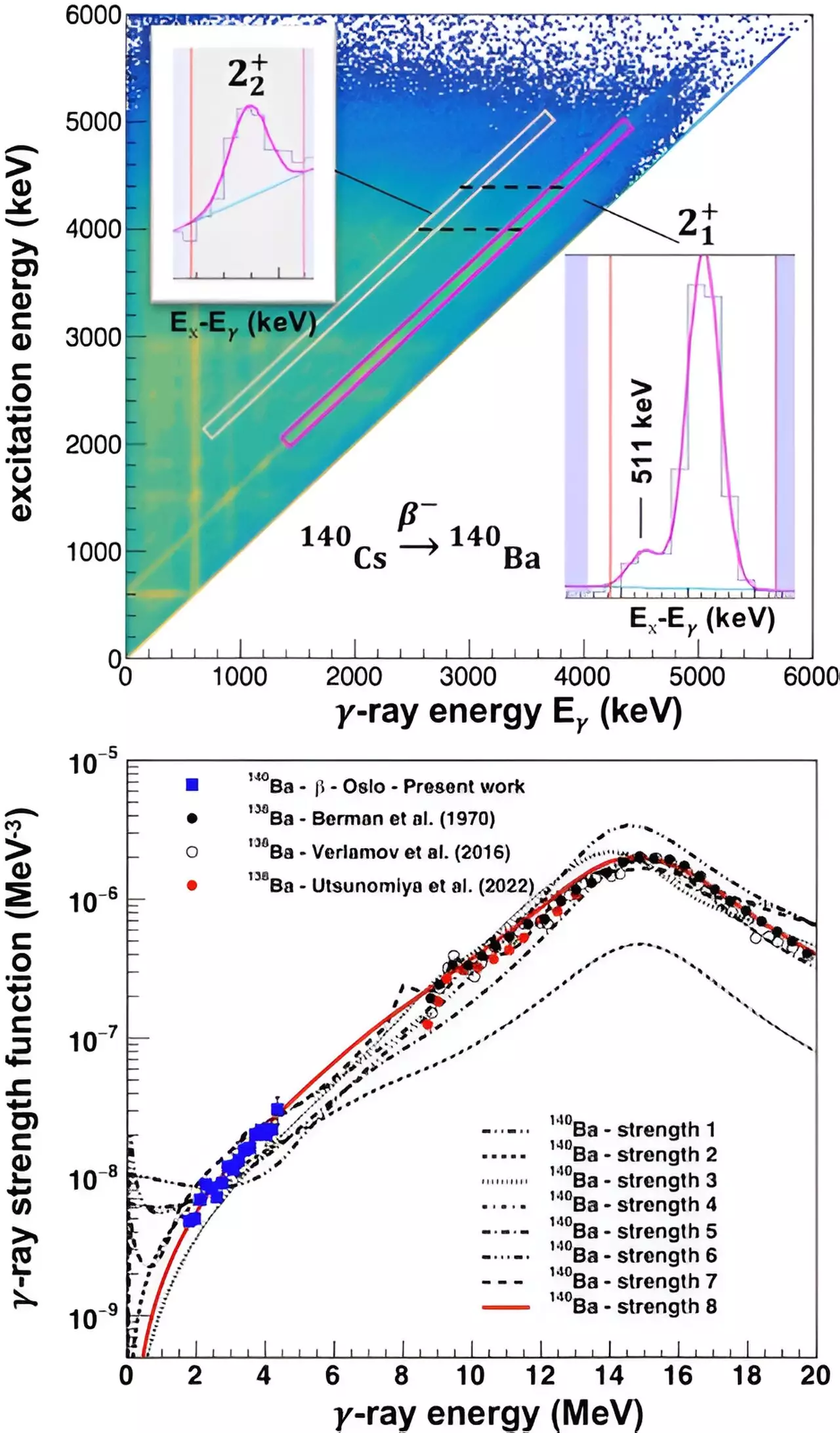The enigmatic processes of star birth and death are central to our understanding of the cosmos. These celestial bodies not only illuminate the night sky but also play a crucial role in the elemental tapestry of the universe. Despite centuries of research, fundamental questions regarding the mechanisms that govern star formation and the synthesis of elements continue to perplex scientists. How do stars produce the energy necessary to sustain themselves for billions of years, and how do they forge the elements we encounter on Earth? These inquiries probe deeper into the intricacies of cosmic chemistry and the evolutionary saga of our universe.
Recent advancements in experimental physics have provided fresh insights into these elusive processes. An international collaboration, which includes experts from the U.S. Department of Energy’s Argonne National Laboratory and various universities, has made strides in deciphering the formation of some of the universe’s heaviest elements. Their findings, published in the journal Physical Review Letters, shine a light on the complex dynamics involved in stellar nucleosynthesis—particularly focusing on the transformation of the isotope barium-139 into barium-140 through neutron capture.
A vital aspect of understanding stars is the study of isotopes, which are variants of elements defined by differing numbers of neutrons in their nuclei. The team led by Professor Artemis Spyrou and Professor Dennis Mücher has illuminated the conversion rate of barium-139, a process that has long posed challenges due to uncertainties in theoretical models. Their research centers around the interactions that take place when neutrons collide with atomic nuclei, ultimately creating heavier isotopes which serve as the building blocks for the myriad elements we observe today.
Traditionally, scientists recognized two primary pathways of nucleosynthesis in stars: the rapid (“r”) process, which occurs in explosive environments like supernovae, and the slower (“s”) process, associated with aging stars. However, observational data hint at a third mechanism—the intermediate (“i”) process—suggesting that the formation of elements might be far more intricate than previously thought. By observing stars with unusual elemental abundances and speculating on the contributions of different nucleosynthesis processes, researchers are beginning to rewrite the narrative of stellar evolution.
Using the unique capabilities of the CARIBU facility at Argonne, the research team examined barium isotopes to ascertain their neutron capture rates—an inherently challenging task given the brief half-life of barium-139, which is only 83 minutes. By employing a technique that allows researchers to study cesium-140’s radioactive decay into barium-140, they were able to detect gamma rays emitted during this decay process. The use of advanced tools such as FRIB’s Summing Nal detector allowed for precise measurements, enabling the researchers to indirectly determine how the neutron-capture rate progresses.
This experimental breakthrough is akin to shifting from sketching a general outline of a painting to revealing intricate details of brushwork. The new data clarifies the relationship between neutron interactions and element synthesis, cleaving through prior uncertainties and anchoring predictive models with empirical evidence.
The broader implications of these findings extend well beyond the confines of immediate astrophysical knowledge. The understanding of element formation within stars is indispensable for piecing together the historical narrative of our universe, including the origins of the elements that compose everything from the air we breathe to the very fabric of our bodies.
Furthermore, the collaborative effort among institutions highlights the importance of interdisciplinary approaches in scientific inquiry. With the impending upgrades to the CARIBU facility, researchers will be empowered to broaden their studies to encompass a wider array of neutron-rich isotopes. This collaborative and innovative spirit stands as a testament to humanity’s enduring quest for knowledge amidst the vast cosmos.
As the scientific community delves deeper into the nature of stellar nucleosynthesis, future studies promise to refine our understanding of how stars create and disperse elements into the universe. The upcoming experimental campaigns using the nuCARIBU upgrade will provide even more opportunities to explore neutron capture mechanisms, paving the way toward a comprehensive model of stellar evolution. This research exemplifies an ongoing journey towards demystifying the cosmic processes that have shaped, and continue to shape, our universe.
The quest to understand the life cycles of stars and the formation of elements is a formidable but essential endeavor. As researchers peel back the layers of knowledge, they inch closer to revealing the cosmic story of our origins—a saga intricately linked to the stars themselves.


Leave a Reply